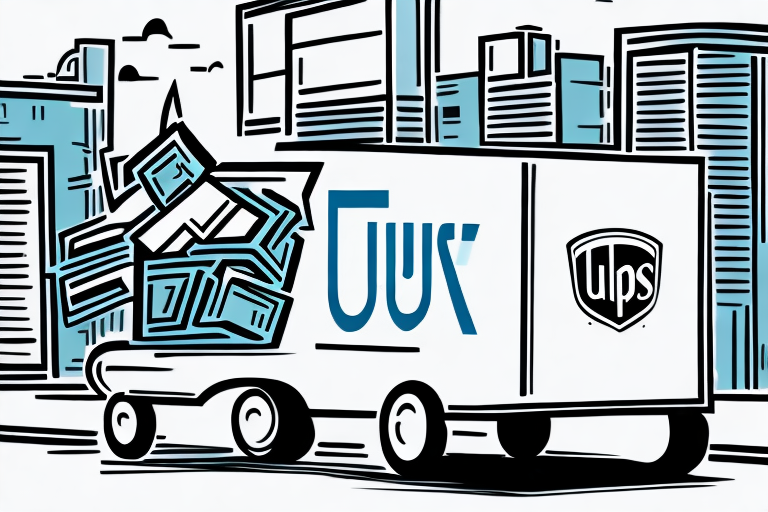Maximizing Efficiency with Freight Bill Audit and Payment
In the transportation industry, timely and accurate payment of freight charges is crucial. Effective management of these payments ensures smooth operations, minimizes disputes with carriers, and controls transportation costs. Implementing a robust freight bill audit and payment process can significantly enhance operational efficiency and financial accuracy.
Importance of Freight Bill Audit and Payment
For companies that frequently ship products, freight bill audit and payment is an essential component of the transportation process. This process involves reviewing carrier invoices to verify the accuracy of billed charges and processing payments accordingly. A well-designed audit system can improve accuracy, reduce costs, and foster better communication with carriers.
Ensuring Billing Accuracy
Freight bill audits help identify discrepancies such as duplicate charges, incorrect rates, or unauthorized accessorial fees. According to the Journal of Commerce, implementing effective audit processes can reduce transportation costs by up to 5-10%. Early detection of errors prevents overpayments and strengthens financial controls.
Enhancing Financial Insights
A comprehensive audit process provides valuable data on shipping patterns and trends. This information aids in strategic decision-making, such as optimizing routes and selecting cost-effective carriers. U.S. Department of Transportation reports that data-driven strategies can lead to significant improvements in logistics efficiency.
Benefits of an Effective Freight Bill Audit Process
Implementing a structured freight bill audit and payment system offers numerous benefits:
- Accurate Payments: Ensures that carriers are paid correctly and on time, maintaining strong relationships.
- Cost Savings: Identifies and eliminates billing errors, saving companies thousands annually.
- Operational Efficiency: Streamlines payment processes, reducing administrative burdens.
- Data Analytics: Provides insights into transportation expenses, aiding in strategic planning.
Conducting a Successful Freight Bill Audit
To achieve a successful freight bill audit, companies should focus on the following key practices:
Standardizing Procedures
Create a standardized checklist or database that tracks essential information such as carrier name, invoice number, shipment details, and payment status. Regular audits using this system ensure ongoing accuracy and help identify discrepancies promptly.
Understanding Carrier Contracts
Thoroughly review carrier contracts to understand rates, surcharges, and accessorial fees. Being aware of specific terms and conditions, including special requirements for hazardous or oversized shipments, is crucial for accurate billing.
Effective Communication
Maintain open lines of communication with carriers to resolve billing discrepancies efficiently. Providing supporting documentation like bills of lading or delivery receipts can facilitate quick resolutions and prevent disputes.
Essential Components of an Effective Audit and Payment Process
An effective freight bill audit and payment process should include:
- Detailed Documentation: Keep comprehensive records of all shipments and carrier charges.
- Regular Communication: Engage consistently with carriers to address and resolve issues.
- Clear Payment Terms: Establish and adhere to defined payment schedules and terms.
- Dedicated Resources: Allocate specific staff or tools to manage the audit process effectively.
Leveraging Technology
Utilizing freight audit software can automate matching invoices with shipment data, identify discrepancies, and flag potential issues for review. Tools like Project44 and Transplace offer advanced solutions to streamline audit processes, reduce errors, and enhance compliance.
Tools to Streamline Freight Bill Audit and Payment
Several technological tools can aid in optimizing the freight bill audit and payment process:
Transportation Management Systems (TMS)
TMS platforms automate the entire process from receiving invoices to making payments. They offer real-time visibility into invoice and payment statuses, enabling quick identification and resolution of issues. MyTMS is an example of a TMS that facilitates efficient freight bill management.
Electronic Data Interchange (EDI)
EDI allows for the electronic exchange of data between shippers and carriers, reducing manual errors and speeding up the payment process. Implementing EDI can lead to faster transaction times and improved accuracy in billing.
Best Practices for Freight Bill Payment Processing
To ensure accuracy and efficiency in processing freight bill payments, consider the following best practices:
- Maintain an Organized Payment Schedule: Keep a reliable schedule to ensure timely payments.
- Use Electronic Payment Methods: Leverage electronic payments to reduce processing time and errors.
- Establish Clear Communication Channels: Facilitate prompt resolution of payment delays or disputes.
- Regular Invoice Reviews: Audit invoices consistently to identify and correct errors early.
- Implement Dispute Management Systems: Create a structured process for tracking and resolving payment disputes.
Staying Updated on Industry Trends
Keeping abreast of industry trends and regulatory changes ensures compliance and uncovers opportunities for cost savings. Resources like the Cargolog provide insights into the latest developments in freight management.
Avoiding Common Pitfalls in Freight Billing and Payment
To maximize the effectiveness of freight bill audit and payment processes, avoid these common mistakes:
- Manual Processing: Relying on manual methods increases the risk of errors and inefficiencies.
- Unclear Payment Terms: Failing to define payment terms can lead to misunderstandings and disputes.
- Irregular Audits: Infrequent audits allow errors to go unnoticed, leading to potential overpayments.
- Outdated Systems: Using antiquated accounting or documentation systems hampers accuracy and efficiency.
Enhancing Communication
Establish clear communication channels with carriers to minimize billing discrepancies. Tools like Slack or Microsoft Teams can facilitate effective communication and collaboration.
The Role of Technology in Enhancing Efficiency
Technology plays a pivotal role in refining freight billing and payment processes:
Automation and Software Solutions
Investing in automation tools and software solutions reduces manual data entry and processing errors. Automated systems like Fleetistics streamline operations, ensuring accuracy and compliance.
Data Analytics
Utilizing data analytics helps identify patterns and trends in transportation costs, enabling informed decision-making regarding pricing, carrier selection, and payment terms. Platforms like Tableau offer robust analytics capabilities for transportation data.
Enhanced Security
Implementing advanced security measures, such as encryption, protects sensitive financial information and prevents fraud. Security-focused tools ensure that both shippers and carriers maintain trust in the billing and payment process.
Key Metrics to Measure Success
Measuring the success of your freight billing and payment process involves tracking key performance indicators (KPIs):
- Payment Accuracy: Monitor the accuracy of payments to ensure carriers are billed correctly.
- Payment Timeliness: Track the speed at which payments are processed and completed.
- Cost Savings: Calculate the reduction in transportation costs achieved through effective auditing.
- Billing Error Reduction: Measure the decrease in billing errors over time.
- Dispute Resolution Rate: Assess the efficiency in resolving payment disputes.
Utilizing Dashboards
Implementing dashboards using tools like Microsoft Power BI can provide real-time insights into these metrics, facilitating proactive management and continuous improvement.
Outsourcing Freight Billing and Payment
Outsourcing freight bill audit and payment services offers several advantages:
- Cost Reduction: Outsourcing can lower operational costs by eliminating the need for in-house resources.
- Access to Expertise: Third-party providers bring specialized knowledge and experience to enhance audit accuracy.
- Advanced Technology: Outsourced services often utilize the latest technology and software, improving efficiency.
- Focus on Core Activities: Freeing up internal resources allows companies to concentrate on their primary business functions.
Choosing the Right Partner
Selecting a reputable third-party provider, such as Austin Transportation Management, ensures reliable service and adherence to industry best practices.
Future Trends in Freight Billing and Payment
The freight billing and payment landscape is evolving with emerging trends:
- Automation and AI: Increased use of artificial intelligence and machine learning to further automate and optimize billing processes.
- Blockchain Technology: Adoption of blockchain for enhanced transparency and security in transactions.
- Sustainability: Emphasis on sustainable practices and transparent reporting within the transportation industry.
- Integration with IoT: Leveraging the Internet of Things (IoT) for real-time tracking and data collection, enhancing billing accuracy.
Embracing Digital Transformation
Companies that embrace digital transformation in their freight billing and payment processes are better positioned to achieve greater efficiency, cost savings, and competitive advantage. Staying informed about technological advancements and industry changes is essential for ongoing success.
In conclusion, an effective freight bill audit and payment process is vital for ensuring accurate and timely financial transactions in the transportation sector. By implementing best practices, leveraging advanced technologies, and considering outsourcing options, businesses can optimize their freight management operations, reduce costs, and build stronger relationships with carriers.








